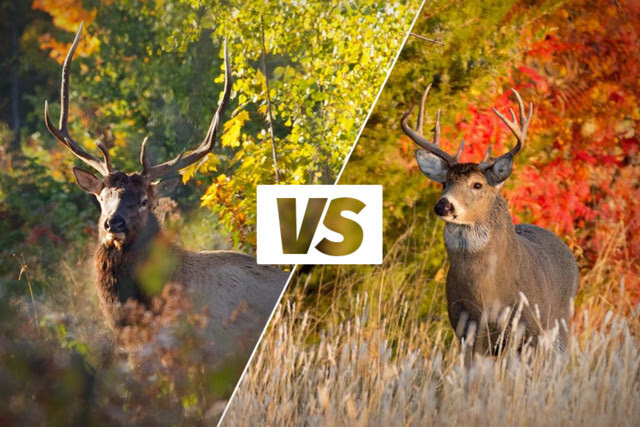Make sure it’s a deer, not an elk you’re shooting at


Hunters are reminded to know their target, and understand the difference between elk and white-tailed deer this hunting season.
Elk occasionally venture outside of Wisconsin’s two elk ranges (the Clam Lake and Black River ranges), especially during the fall breeding season. Positively identifying the target ensures the safety of other people and avoids accidental shooting of non-target animals.
Adult elk are larger than adult deer. An adult elk stands about one to two feet taller than an adult deer at the shoulders. An elk calf will be about the same size as an adult white-tailed doe, but will display similar coloration to adult elk.
Spot the difference in the antlers. White-tailed deer antlers curve forward, whereas elk antlers are larger and sweep back from their heads.
Look for color markings. Elk have a tan rump patch, black legs and a dark brown mane. Deer have legs the same color as their bodies, a white throat patch and a fluffy white tail.
Elk moving throughout the state, may have noticeable markers, including colored ear tags or tracking collars. These collars are fixed around the neck and are typically orange in color, sometimes, with a visible printed number.
Since there are still isolated incidents where hunters mistake an elk for a white-tailed deer, hunters should note that any illegally taken elk may result in a fine and a revocation of hunting licenses.
Observations of elk outside the management zones can be reported through https://apps.dnr.wi.gov/wildlifeobservation/.



